Genesee County has a wonderful history of amazing athletes in every sport and from all walks of life. In September, football is in full swing and just in time for the season, MCM presents the Top 10 all-time football players from Greater Flint!
Their ranks include a Heisman Trophy winner, a Pro Football Hall of Famer, three members of the College Football Hall of Fame and five first-round NFL Draft picks.
They are the ten greatest football players Genesee County has ever produced.
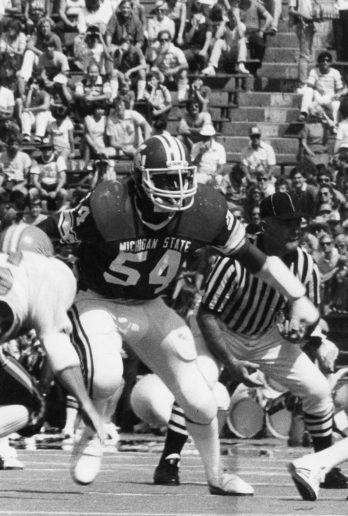 Carl Banks
Carl Banks
No Genesee County player has been drafted higher than the fierce linebacker, who was taken third overall by the New York Giants in 1984 after an All-State career at Beecher and All-American tenure at Michigan State.
In nine seasons with the Giants, Banks helped them win a pair of Super Bowls (XXI, XXV). He finished with 14 tackles, 10 solo, in Super Bowl XXI as New York knocked off the Denver Broncos, 39-20.
In 1987, Banks was named first-team All-Pro and went to the Pro Bowl. A players’ strike shortened that season to 12 games, but Banks finished sixth in the NFL with 101 total tackles, including nine sacks.
Banks, who concluded his 13-year career with the Washington Redskins and Cleveland Browns, played in 173 NFL games, starting 151. He had 860 career tackles with 39.5 sacks, six fumble recoveries and three interceptions. Banks was named to the NFL’s All-1980s second team.
At Michigan State, Banks was presented the Dick Butkus Award in 1983 as the nation’s best linebacker and was a first-team All-American. He finished with 86 tackles that year, despite defenses doing their best to avoid him.
Banks topped MSU with a team-leading 97 tackles as a sophomore and finished with 279 career tackles in 44 games. He was a three-time All-Big Ten choice.
In 2015, Banks was named the 29th-best player in MSU history by the Lansing State Journal and the program’s third-best linebacker ever by the Detroit News in 2016.
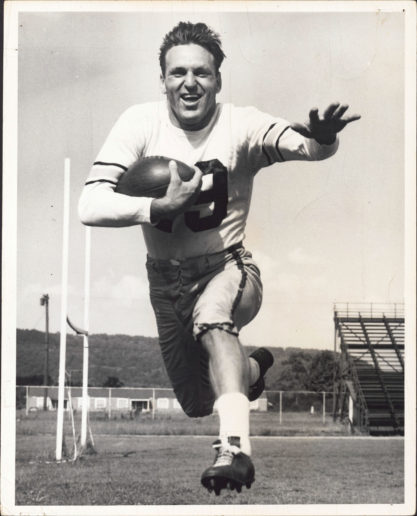 Lynn Chandnois
Lynn Chandnois
During four seasons at Michigan State (1946-49), the Flint Central All-Stater rarely left the field and still ranks among the Spartans’ all-time top ten in several offensive and defensive categories.
Seven decades after last wearing the green and white, he remains the program’s all-time leader in interceptions (20) and interception return yards (410). He also ranks eighth in total touchdowns (31) and tied for ninth in rushing touchdowns (29).
Chandnois finished with 3,535 all-purpose yards, 2,103 rushing yards and 30 touchdowns in 38 career games. He was named MSU’s MVP in 1948, averaging 10.1 yards every time he touched the football. That includes rushing for 681 yards on just 91 carries, a 7.5-yard average that ranks second in school history. He also intercepted four passes and scored 12 touchdowns.
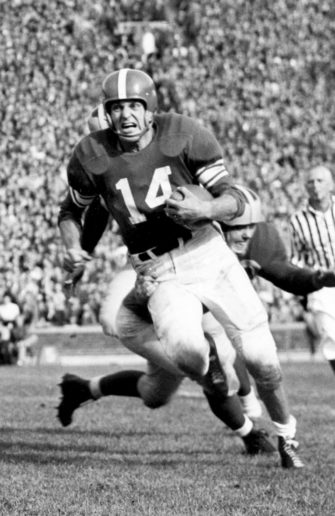 Chandnois was a first-team All-American in 1949, finishing with 1,382 all-purpose yards in a mere nine games, including 885 rushing yards. His 90-yard scoring run against Arizona that year remains the longest rushing play in MSU history. He also intercepted seven passes and scored ten touchdowns.
Chandnois was a first-team All-American in 1949, finishing with 1,382 all-purpose yards in a mere nine games, including 885 rushing yards. His 90-yard scoring run against Arizona that year remains the longest rushing play in MSU history. He also intercepted seven passes and scored ten touchdowns.
In 2015, he was No. 21 on the Lansing State Journal list of the Top 50 players in MSU history.
Chandnois, who died in 2011, was drafted No. 8 overall by the Pittsburgh Steelers in 1950 and made the most of a seven-year NFL career. His 29.6-yard kickoff return average ranks third in NFL history. In 72 career games, Chandnois rushed for 1,934 yards, caught 162 passes for 2,012 yards and returned 92 kickoffs for 2,720 yards (third in Steelers history). He accounted for 26 touchdowns.
He made the Pro Bowl in 1952-53 and was named the NFL Player of the Year in 1952 when he led the league in kickoff return average (35.2) and had 1,378 all-purpose yards in 12 games. Chandnois also led the NFL in kickoff return average in 1951 (32.5) and all-purpose yards (1,593) in 1953.
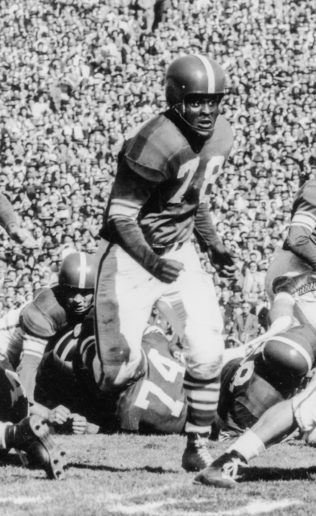 Don Coleman
Don Coleman
One of the best to ever don the green and white of Michigan State, Coleman did not even begin playing football until his senior year at Flint Central in the fall of 1947.
Despite being a gridiron novice and weighing barely 180 pounds, Coleman became an All-State guard, catching the eye of Spartans’ Coach, Biggie Munn.
During his three seasons (1949-51), Coleman led MSU to a 23-4 record. He played every minute of most games, starting on both the offensive and defensive lines and special teams.
As a senior, Coleman became MSU’s first unanimous All-American, was named team MVP and finished second in voting for the Outland Trophy, which goes to the nation’s best lineman. In a win over Penn State that year, he made every tackle on the Spartans’ punts and kickoffs, and finished 10th in the Heisman voting.
Coleman became the first Spartan player ever to have his jersey retired (No. 78) and was elected to the College Football Hall of Fame in 1975. In 1970, he was named to MSU’s All-Time team and declared the best all-time interior lineman in the school’s history.
In the 1952 draft, he was taken in the eighth round by the Chicago Cardinals and reported to training camp in 1954 after a stint in the Army. Coleman appeared in pre-season games, but was traded to the Green Bay Packers less than a month later and decided against a pro career.
He returned to Flint Central and became a teacher, coach and administrator. Coleman returned to MSU in 1968 and served the school in various capacities until retiring in 1992. He passed away in 2017.
 Mark Ingram, Jr.
Mark Ingram, Jr.
Genesee County’s only Heisman Trophy winner, the Southwestern All-Stater was presented with college football’s highest honor in 2009 while leading Alabama to an undefeated season and national championship.
He is one of only six freshman or sophomores to win the award in its 83-year history.
Ingram finished 2009 with 1,658 yards rushing and 17 touchdowns. He also caught 32 passes for 334 yards and three scores. The rushing yards and yards-per- carry marks are third in Alabama history for a single season, while the total touchdowns rank fourth.
Ingram was named MVP of the National Championship game, rushing for 116 yards and two touchdowns. He was also a unanimous All-American and All-SEC first team pick that year.
 Injuries slowed Ingram the following season, his final one at Alabama, but he finished his career with 3,261 yards rushing and 42 touchdowns. Ingram also caught 60 passes for 670 yards and four touchdowns. He is tied for first in school history in rushing touchdowns, second in total touchdowns and fifth in total yards (3,976).
Injuries slowed Ingram the following season, his final one at Alabama, but he finished his career with 3,261 yards rushing and 42 touchdowns. Ingram also caught 60 passes for 670 yards and four touchdowns. He is tied for first in school history in rushing touchdowns, second in total touchdowns and fifth in total yards (3,976).
In the 2011 NFL Draft, Ingram was taken in the first round (No. 28 overall) by the New Orleans Saints. In eight NFL seasons, he has played in 106 games, starting 64, with 6,007 rushing yards and 50 touchdowns. He also has caught 228 passes for 1,598 yards and five touchdowns.
A two-time Pro Bowl pick, Ingram’s best season has been 2017 when he rushed for 1,124 yards and 12 touchdowns, second in the NFL. His 4.9-yards per carry that year ranked fourth in the league. He also caught 58 passes for 416 yards.
Ingram played at Grand Blanc his first three years of high school before transferring to Southwestern. He rushed for 2,546 yards as a junior and senior with 38 touchdowns.
Ingram made NFL Network’s Top 100 Players list in 2017 (No. 43) and 2018 (No. 80). He signed with the Baltimore Ravens earlier this year.
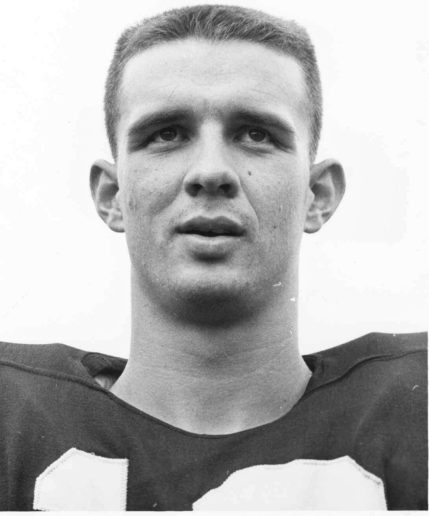 Paul Krause
Paul Krause
In 1998, the Burton Bendle All-Stater became Genesee County’s only Pro Football Hall of Fame inductee. Four decades after his retirement, Krause remains the NFL’s career interceptions leader with 81, surpassing the previous record of 79 during his final season with the Minnesota Vikings in 1979.
During 16 NFL seasons, Krause played in 226 games, starting 202, and ranks seventh in career interception return yards (1,185). He is also 19th in career fumble returns yards (163).
Krause returned three interceptions for touchdowns and took three of his 19 fumble recoveries to the end zone.
In his first two years at Iowa, Krause played both football and baseball, earning team MVP and second-team All-District honors on the diamond before a shoulder injury ended his baseball career. On the gridiron, Krause made second-team All-Big Ten and was co-captain of the Hawkeyes’ 1963 team. He was MVP of the Senior Bowl, as well.
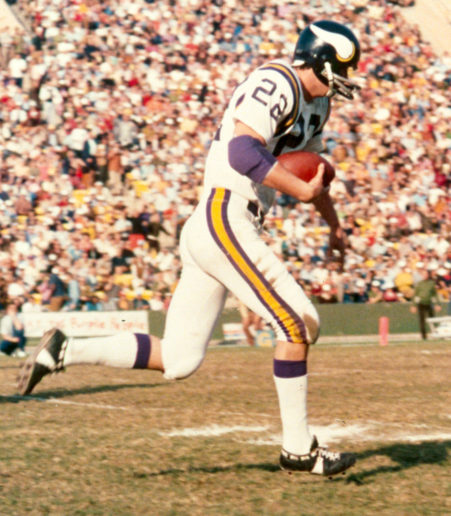 Krause’s NFL career began with a bang after being taken by the Washington Redskins in the second round of the 1964 draft. He finished with a league-leading 12 interceptions as a rookie, earning first-team All-Pro honors and finishing second in Rookie of the Year voting. After four seasons, he was traded to Minnesota.
Krause’s NFL career began with a bang after being taken by the Washington Redskins in the second round of the 1964 draft. He finished with a league-leading 12 interceptions as a rookie, earning first-team All-Pro honors and finishing second in Rookie of the Year voting. After four seasons, he was traded to Minnesota.
Overall, Krause was named to eight Pro Bowls, was a three-time All-Pro and part of Pro Football Reference’s 1970s All-Decade second team.
He played in four Super Bowls with the Vikings, recording an interception in Super Bowl IV and a fumble recovery in Super Bowl IX.
Krause was named to the Redskins 70th Anniversary and the Vikings 50th Anniversary teams.
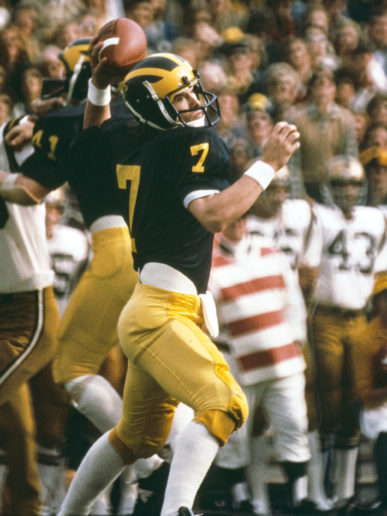 Rick Leach
Rick Leach
The Flint Southwestern All-Stater was one of the most productive and successful quarterbacks in University of Michigan history, starting for four seasons.
In 1975, Leach became the first true freshman to start at quarterback in the program’s history and never relinquished the job, leading the Wolverines to a 38-8-2 record during his career, including three Big Ten Championships.
Leach still holds Michigan’s yards-per-completion records for career (17.1) and a single-game (36.2). He is also fifth in passing touchdowns (48) and total plays (1,034), and sixth in total yards (6,460, including 4,045 passing) and rushing touchdowns (34). Leach was the first quarterback in NCAA history to pass for more than 4,000 yards and rush for over 2,000.
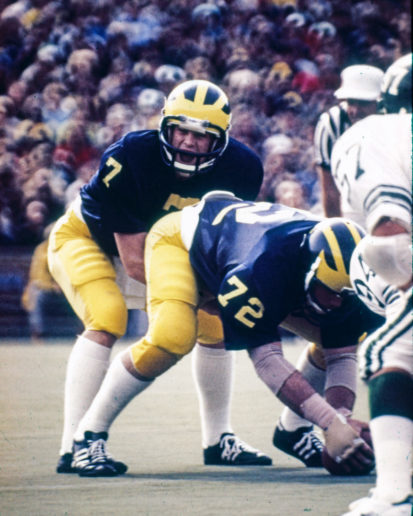 As a senior, he was a three-time, first-team All-Big Ten pick and was named the Big Ten’s and the team’s MVP when he passed for 1,283 yards and 17 touchdowns and ran for 611 yards and 12 scores in 12 games.
As a senior, he was a three-time, first-team All-Big Ten pick and was named the Big Ten’s and the team’s MVP when he passed for 1,283 yards and 17 touchdowns and ran for 611 yards and 12 scores in 12 games.
Leach was an honorable mention All-American as a sophomore and a first-team All-American as a senior. In the Heisman voting, he was 14th as a sophomore, eighth as a junior and third as a senior.
In the 1979 NFL Draft, Leach was taken by the Denver Broncos in the fifth round and attended rookie camp. However, he was also a baseball All-American at Michigan and opted for a Major League career after the Detroit Tigers selected him in the first round of the 1979 MLB Draft. He spent ten seasons in the Major Leagues (1981-90).
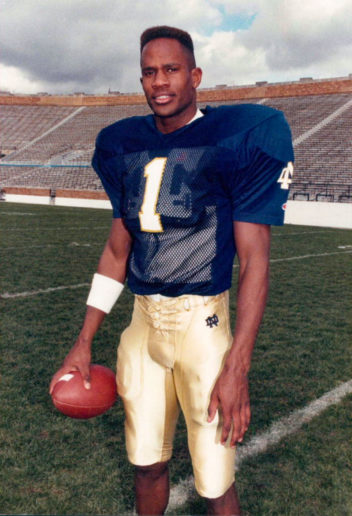 Todd Lyght
Todd Lyght
The Flint Powers All-Stater is the only Genesee County player with National Championship (Notre Dame, 1988) and Super Bowl (XXXIV) rings on his hand.
At Powers, a senior season during which Lyght intercepted ten passes and finished with 887 receiving yards and ten touchdowns led to a scholarship offer from legendary Irish Coach, Lou Holtz. Lyght finished his college career with 11 interceptions, 161 tackles and 20.5 passes broken up and was a finalist for the 1989 Jim Thorpe Award, which goes to college football’s top defensive back.
Lyght was also a consensus All-American as a junior and senior and was captain his senior year.
In the 1991 Draft, he was taken fifth overall by the St. Louis Rams, playing ten seasons with the Rams and two with the Detroit Lions. During his NFL career, Lyght played in 175 games, starting 167 and finished with 37 interceptions and 823 total tackles. He returned four interceptions for touchdowns. Lyght also successfully defended 462 passes, forced six fumbles, recovered six fumbles and had ten tackles for loss, including six sacks.
In 1999, Lyght was named to the Pro Bowl and second-team All-Pro while finishing with six interceptions, 13 passes defended and 66 tackles. Lyght capped that season by helping the Rams knock off the Tennessee Titans in the Super Bowl during which he blocked a field goal attempt in the first half and finished with five tackles.
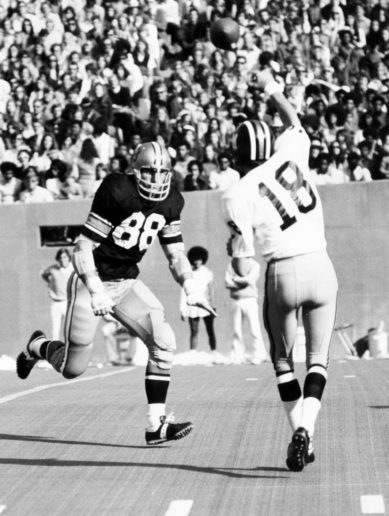 Herb Orvis
Herb Orvis
A 2016 College Football Hall of Fame inductee, Orvis took a different path to the college ranks.
He dropped out of Beecher after his junior year, enlisted in the Army and earned his diploma while stationed in Berlin, Germany. He also played football for an Army squad there and caught the eye of Colorado Coach, Eddie Crowder, who was in Europe on a government-sponsored coaching tour.
In 1969, Crowder extended an offer and Orvis began a very productive career on the Buffalos’ defensive line. He finished with 189 career tackles, 32 for loss. Orvis is tied for sixth on Colorado’s career sacks list with 20. He was a 1971 All-American and twice earned first-team All-Big Eight honors. He was also named to the 1970s All-Big Eight Decade team and to Colorado’s All-Century team in 1989.
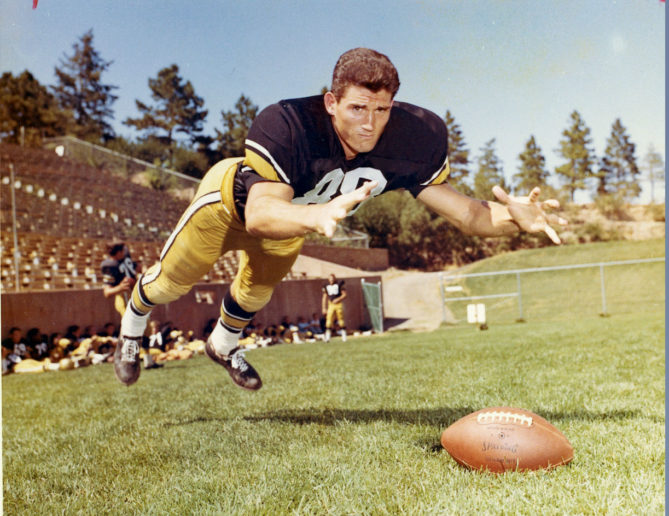 Orvis made an immediate impact his first season, finishing with 75 tackles, including 12 for loss and nine sacks while being named Big Eight Newcomer of the Year. His 14 tackles for loss in 1970 are tied for the second-most in a season in school history.
Orvis made an immediate impact his first season, finishing with 75 tackles, including 12 for loss and nine sacks while being named Big Eight Newcomer of the Year. His 14 tackles for loss in 1970 are tied for the second-most in a season in school history.
The Detroit Lions made Orvis the 16th overall pick in the 1972 NFL Draft. He played for the Lions through 1977 before being traded to the Baltimore Colts and playing for them through 1981.
Complete statistics for Orvis’ NFL career are unavailable, but he did recover nine fumbles and was named second-team All-Pro in 1975. He was the Lions 1973 Defensive MVP.
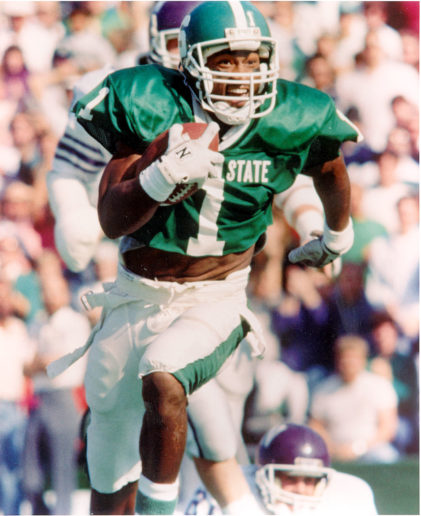 Andre Rison
Andre Rison
A three-time All-Stater, the Northwestern grad established himself as one of the best receivers in Michigan State’s history before a 12-year NFL career that included five Pro Bowl appearances.
Rison, a two-time All-Big Ten selection and first-team All-American, still ranks among the Spartans’ top five in career receiving yards (2nd – 2,992), 100-yard games (2nd – 11), yards per catch (3rd – 20.5), receptions (5th – 146) and touchdown catches (5th – 20).
Rison’s 24.64 yards per catch average in 1988 is the second-best, single-season mark in MSU history and his 252 yards against Georgia in the Gator Bowl that season is the school’s third-best, single-game total.
The Indianapolis Colts selected Rison in the first round of the 1989 draft (No. 22 overall). He also played for the Atlanta Falcons, Cleveland Browns, Jacksonville Jaguars, Green Bay Packers, Kansas City Chiefs and Oakland Raiders, appearing in 186 games and starting 156.
Rison was a one-time, first-team All-Pro, three-time second-team All-Pro and All-Rookie team member. His best season was 1993 as he tied for the NFL lead with 15 touchdown receptions, was fourth in receiving yards (1,242) and caught 86 passes.
He helped the Green Bay Packers win Super Bowl XXXI over the New England Patriots by catching a 54-yard touchdown pass from Brett Favre on the second play of the game. Rison was also MVP of the 1994 Pro Bowl, catching eight passes for 86 yards.
He ranks 18th in NFL history in receiving touchdowns (84) and is among the top 46 in receptions (743) and receiving yards (10,205).
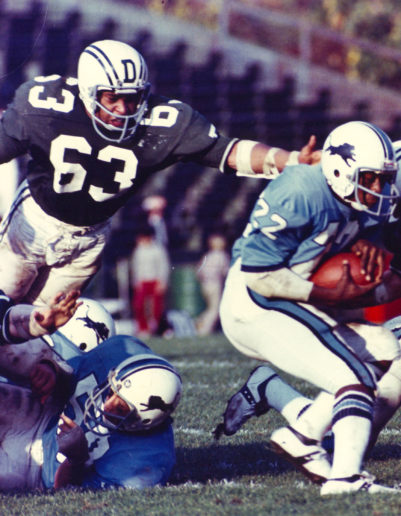 Reggie Williams
Reggie Williams
The Flint Southwestern All-Stater and 2007 College Football Hall of Fame inductee is regarded as one of the best players in Cincinnati Bengals history and was key to their 1980s Super Bowl runs.
After an All-American career at Dartmouth, the highly-productive linebacker was taken by the Bengals in the third round of the 1976 draft and stayed for 14 seasons, the third-longest tenure in franchise history. Only Ken Riley (207) has played more games in a Bengals uniform than Williams (206). He started all but ten of those games.
Williams ranks fourth on the Bengals’ career sacks list (62.5) and racked up 1,164 tackles, 23 fumble recoveries, 16 interceptions and two safeties. He led the team in tackles and sacks three times each.
As a rookie, Williams made an immediate impact, leading the Bengals in tackles (106) and finishing with 2.5 sacks and an interception while making the NFL All-Rookie team. The next season was Williams’ best as he totaled 120 tackles and three interceptions.
He made four tackles in Cincinnati’s loss to the San Francisco 49ers in Super Bowl XVI and recorded eight tackles in their Super Bowl XXIII loss to the 49ers, including a sack of Hall of Fame quarterback, Joe Montana.
Known for his charity work, Williams received the Walter Payton Man of the Year Award, the NFLPA Bryon “Whizzer” White Award for Humanitarian Services, Sports Illustrated NFL Sportsman of the Year, and the Walter Camp Man of the Year Award during his time with the Bengals.
In 2013, Bleacher Report named Williams the 20th-best player in Bengals history. He was also named to the franchise’s 2017 50th Anniversary Team. He was a three-time All-Ivy Leaguer at Dartmouth and still ranks second on the school’s career tackles list (370).
Honorable Mentions:
- Jon Runyan (Carman-Ainsworth, Michigan, Oilers, Titans, Chargers)
- Courtney Hawkins (Beecher, Michigan State, Buccaneers, Steelers)
- Booker Moore (Southwestern, Penn State, Bills)
- Clarence Peaks (Central, Michigan State, Eagles, Steelers)
- Brandon Carr (Carman-Ainsworth, Grand Valley State, Chiefs, Cowboys, Ravens)
- Robaire Smith (Northern,Michigan State, Titans,Texans, Browns)
- Lonnie Young (Beecher, Michigan State, Cardinals, Jets, Chargers)
- Eugene Marve (Northern, Saginaw Valley State, Bills, Buccaneers, Chargers)
- Leo Sugar (Northern, Purdue, Cardinals, Eagles, Lions)
- Brent Williams (Northern,Toledo, Cardinals, Patriots, Seahawks, Jets)
- Bob Rowe (Flushing, Western Michigan, Rams)
Throughout its long history, Greater Flint has been a hotbed of athletic talent, and there’s more to come! Our robust high school sports programs continue to produce great athletes with high academic skills and leadership ability. Whether they play with the varsity on Friday nights or with friends in a vacant lot, any player has the potential to be Flint’s next football GOAT.
Photos provided by Michigan State athletic communications, New Orleans Saints, Minnesota Vikings, University of Michigan, Notre Dame athletics, Los Angeles Rams, University of Colorado, Cincinnati Bengals & Pittsburgh Steelers






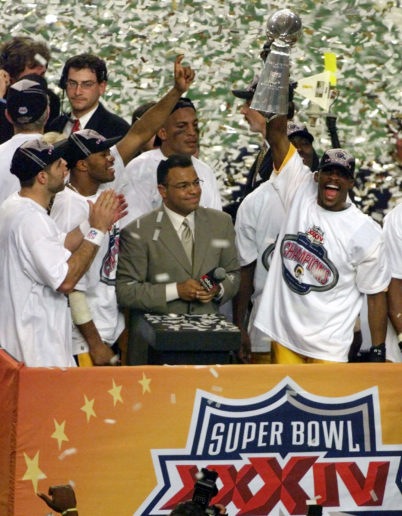
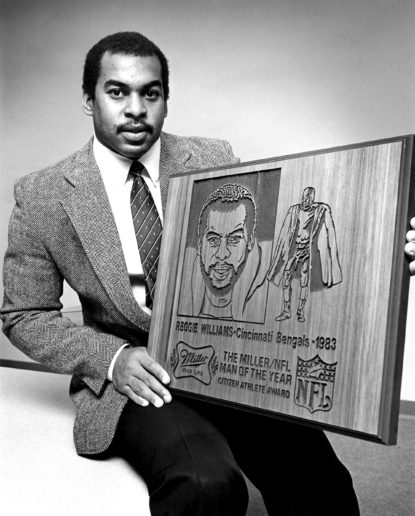


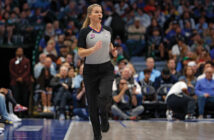
2 Comments
George Hoey not on this list? Flint Central and NFL Cardinals?
George Hoey? University of Michigan